J & H PaleoScience: Vertebrate Ichnology. Fossil foot prints and track ways from Massachusetts MA, Connecticut CT, New York NY, New Jersey NJ, Pennsylvania PA, Maryland MD
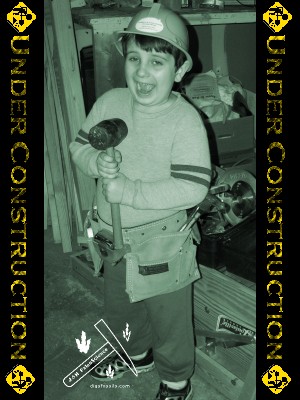 The ground is frozen in the North East Coast. I can't break through.
The ground is frozen in the North East Coast. I can't break through.

 The ground is frozen in the North East Coast. I can't break through.
The ground is frozen in the North East Coast. I can't break through.

But footprints and trackways are only preserved under special conditions. When the mud is too wet the footprint is formed but quickly fills in (mud collapse). If anything is preserved it's thin and most likely deformed. If the mud is too dry the track is faint and barely detectable. However, not only does the mud have to be the proper consistency, a layer of biofilm (algae - also referred to as biolamination) has to be present or the foot of the dinosaur would not have cleanly separated from the mud. A muddy foot does not leave distinguishable tracks. But under the proper conditions a print would have been formed, then the following events have to take place to preserve it. The mud has to dry out then the footprint has to be filled in by the accumulating sediments. Given enough time and pressure (from the weight of sediments or basalt above) the rock lithicates and the sediments solidify. When the rock is split a natural imprint (impression, negative relief, or mold) on the bottom layer and a natural cast (positive relief) from the top layer of sediments is revealed.
It is my belief (and I might be wrong) that without the biolamination the rock will not cleanly separate if the sediments below and above the track layer are too similar. Sometimes the footprint is so well preserved that the scales of the foot are easily seen. Some dinosaurs were also heavy enough to deform layers of sediment below the surface; such impressions are called "undertracks" or "ghost prints" because they reside under the original track layer. Although it seems that very specific conditions must be met in order for a print to be conserved, one most consider the number of prints one creature could have created during its lifetime. In fact most prints are found in a few strata (layers) within the almost 7 km of sediments deposited over 30 million years. It's very common to find a productive layer (strata) containing prints because only at that time were the conditions right to preserve prints. Interestingly is the large slab of prints housed by the Rutgers Geology Museum where the same species left many prints but they differ in the depth of the print. Perhaps they were left by the same creature but at days or weeks apart as the mud was drying out.
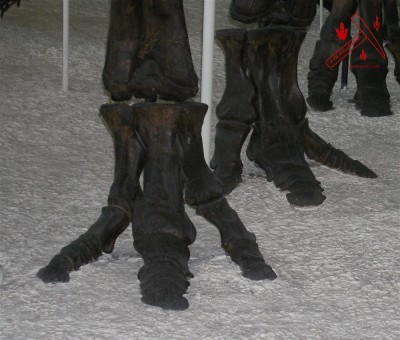 Here is again our Duckbill dino foot from the AMNH. | ||
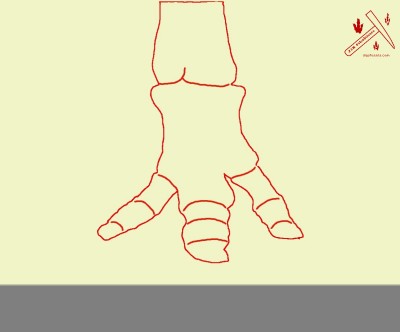 Here he is about place a step into biolaminated mud. |
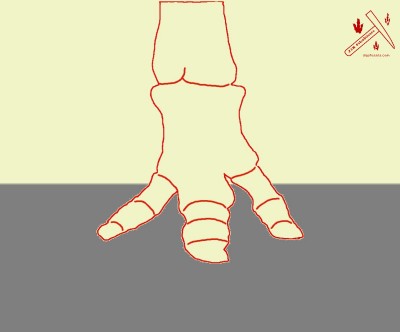 The foot is deep in the mud. |
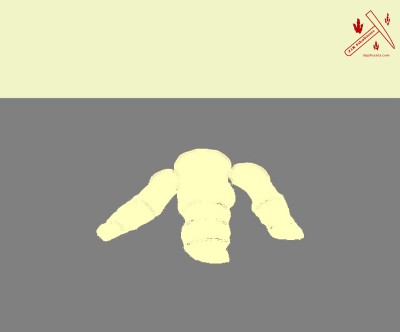 Once the foot is removed an impression is formed. |
 |
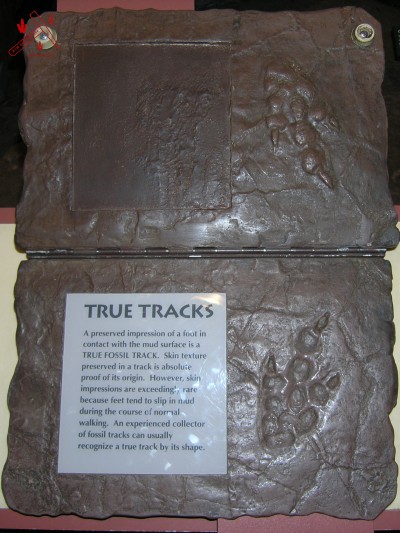 TRUE TRACKS A true track can be identified only when the conditions are right to preserve a good print. It is possible for a true print not to exist because of the lack of biolamination. The foot could deform the layers far below the surface mud forming the underprints, but if the contact surface of the depression is too similar to the mud that fills it in, the true track is lost. Therefore an overprint and underprint could be formed, but the true track is lost because the mud fused together. |
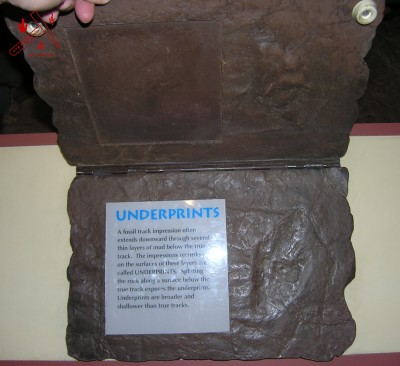 UNDERPRINTS These prints could be easily confused for poorly preserved real prints. Underprints never have skin details and if claw marks are present then the tips are shown. |
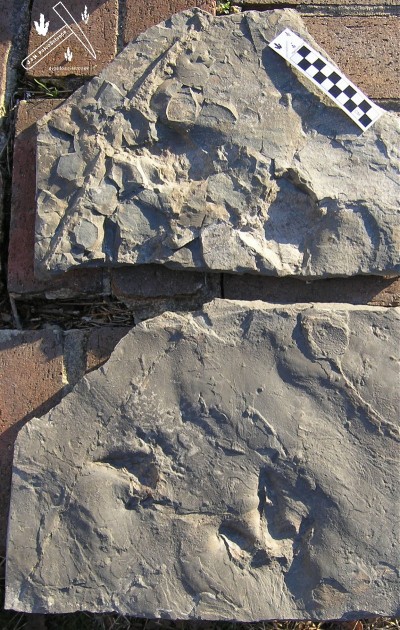 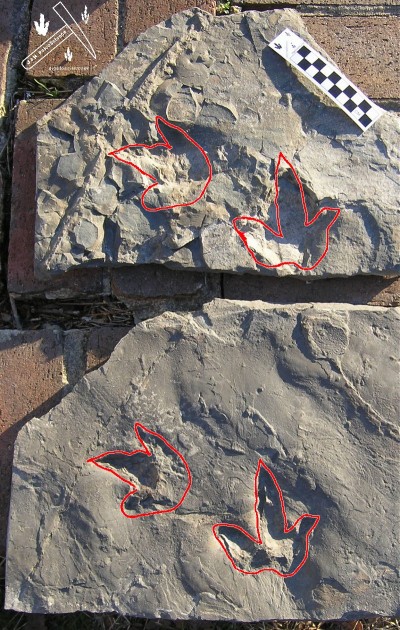 |
Here is a late Triassic / early Jurassic example of real prints and underprints. The two prints on the top most slab (one facing west and the other facing north) were formed perhaps by different but similar dinosaurs. The rough surface of the slab indicates that the substrate (very likely clay) preserved poorly and with desiccation cracks. Because of the deep impressions made one would expect that the relatively small and light-weight dinosaurs stepped into soft material. Since the track did not collapse or fill-in one would also expect that the substrate would be more clay like than a free flowing mud. Unfortunately this substrate did not form very good "real prints". The photo of the slab immediately below the clay slab demonstrates the underprint formed by the foot of the dinosaurs. The force of the foot on the substrate layers deformed this layer below the real print or clay layer. | |
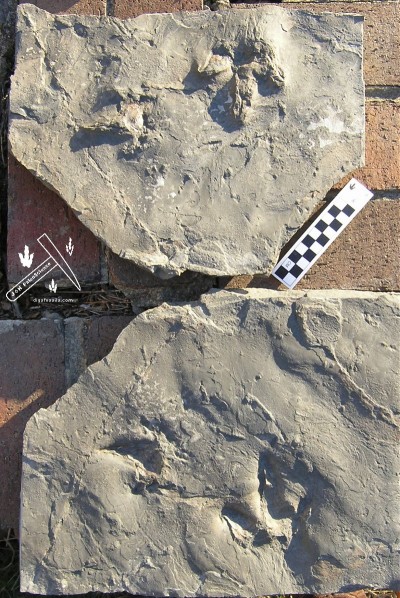 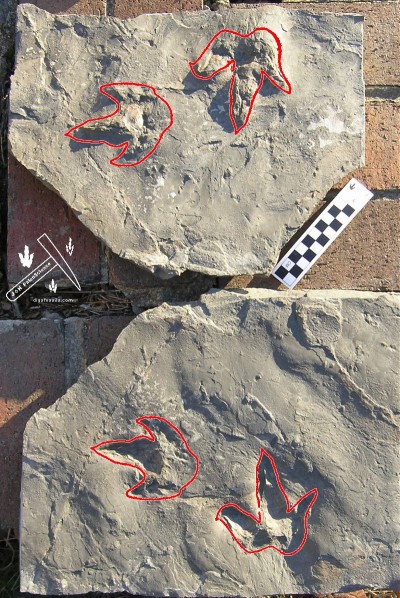 |
Here are the same slabs but the clay slab (top slab) was turned over. This view shows how the impression deformed the bottom the clay slab. If the bottom slab showing the impressions would be split to view the layer beneath what is shown now, one might see a second set of underprints. These underprints would be obviously less defined because of the depth below the real print layer. The lower the layer the less deformation is experienced. And if the dinosaur had claws that did not curl as he stepped the claws would leave traces as well in the underprint layers. In some cases where the substrate does not easily deform, only claw marks are left in the underprint layers. | |
 | ||
Back to the main page - Vertebrate Ichnology